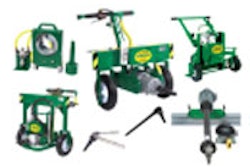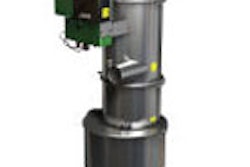Product designers and engineers are responsible for putting hundreds of thousands, sometimes millions, of units of products on the market each year. Since our work occurs at the beginning of a product lifecycle, we have the opportunity — make that responsibility — to effect change. Incremental changes, when multiplied by large number of units, can have a significant impact.
Recently, the MIT Sloan Management Review surveyed 3,000 businesses, and 60 percent responded that they are increasing their investment in sustainability. But good intentions are sometimes blunted by a concern over costs and a lack of knowledge of how to actually implement more sustainable processes.
My colleagues and I at Bresslergroup have worked with several clients to demonstrate that more sustainable design processes would actually save them money and are relatively painless to integrate into their existing product development process.
Our “incrementalism” approach is focused on cost reduction because we think that this tangible benefit is most likely to gain support.
In-depth life cycle analysis may take months and hundreds of thousands, or even millions of dollars, to capture every last specific detail about a process. In a truly in-depth LCA, it’s not enough to say one has a pound of ABS plastic in their design. They have to know where the oil for the plastic came from, where the chemicals came from and how much energy went into their manufacturing and where were they transported. While this in-depth analysis is appropriate for some companies, it doesn’t lend itself to quick and economical action.
Fortunately, there’s another way to go: we call it the “aggregate data base camp,” which uses industry average data for each of the five LCA steps. So, one would look at that same pound of ABS plastic and look at average environmental impacts that come from the industry as a whole.
A number of new software approaches equip designers and engineers for the task, including Sustainable Minds, EcoTeam and SustainabilityXpress from SolidWorks. All provide a basic tool to get started with more sustainable product development.
We’ve evolved a five-phase process for working with these tools to “cut the crap” (pardon the French) when designing more sustainable products while saving clients money at the same time. These are steps that can be grafted onto whatever a company’s current process might be.
Here’s a real-life example: consider the shipping reel. You’ve seen these large wooden reels on the backs of trucks, loaded up with heavy wire tubing. The empty reels often wind up as grad student coffee tables or in landfills. The reason? It’s cost prohibitive to return them. A wire vendor can almost always buy a new reel for less than it costs to ship one back and reuse it. So, their lifespan averages two trips. Even if you want to re-use them, the wood flange degrades after about six cycles.
The business and environmental challenge was to design a reel that would be more cost-effective to return and reuse. The notion was to make the reels collapsible so they could be broken down and shipped back at a far lower cost.
Our preconception was that the new device would be entirely plastic and we set the mark at 36 shipments, versus the one or two currently being used. But our initial Sustainable Minds analysis showed that an all-plastic reel with 36 uses would be essentially equivalent — environmentally — to the wooden reels already on the market! Back to the drawing board.
After analyzing the strength and environmental impact of all wood and all plastic, we developed a hybrid approach, with a plastic core that allowed us the flexibility to design the breakdown features, with wooden flanges to hold the wire. On the basis of stiffness, wood is really a tremendous material, and quite well-suited for this application. Ultimately, we defined the system as a single plastic, two-part core with six sets of wood flanges (making 6 trips each), for a total of 36 uses. With this hybrid system we were able to achieve a 37 percent improvement in environmental impact.
Finally, we looked for additional improvements by optimizing the structure of the core’s plastic parts. We were able to cut out about 10 percent of the plastic, which ultimately brought us to a 45 percent improvement in the environmental impact of this new reel, from the starting point of the all-wood reel.
That extra 10 percent represents a huge cost savings for the client and reduces the number of pounds of plastic used by 10 percent. Multiply that by the number of reels that will be manufactured and we were looking at a significant impact. We are now exploring a manufacturer take-back program using practically all-recycled plastic.
Engineers and product designers can start utilizing tools like Sustainable Minds more and more frequently. Their leadership will absolutely impact our environment for the good, not to mention their client’s bottom lines.






















